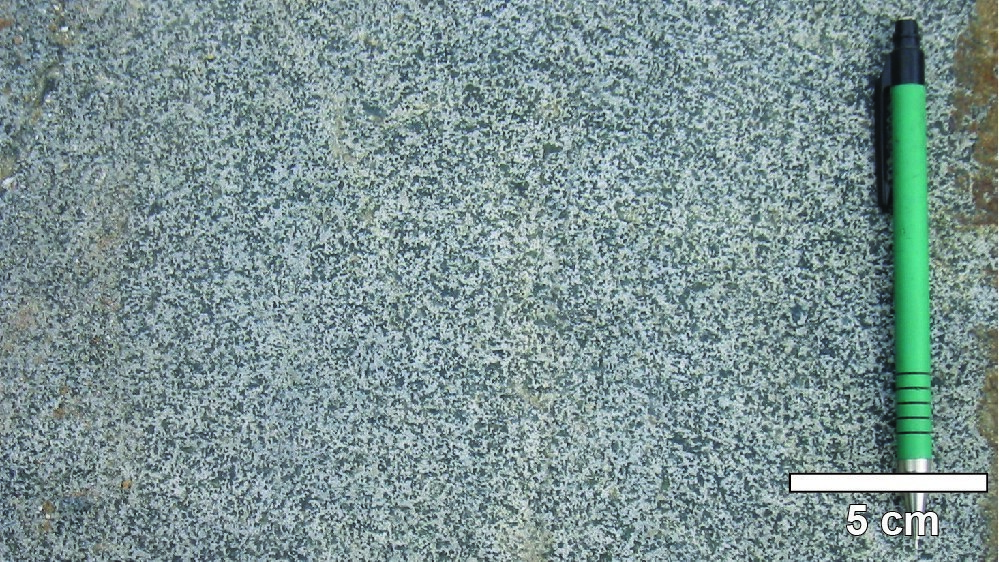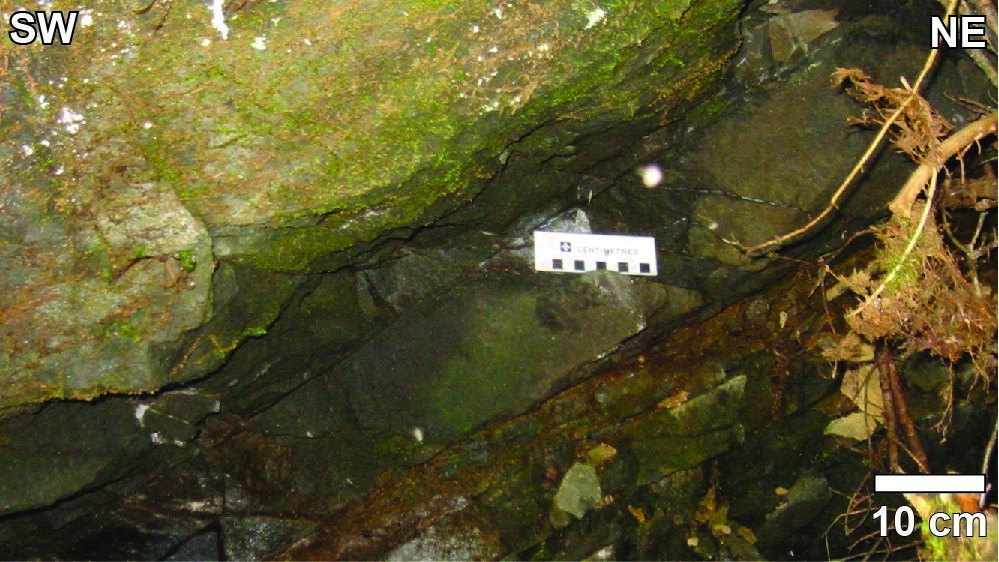
Last modified:
Translation of original French
| Author: | Horscroft, 1957 |
| Age: | Neoarchean |
| Reference section: | Reference outcrop series (UTM NAD83, Zone 18: 549628 mN, 5532617 mE) show the sheared contact of the upper part of the Smith Sill gabbro with the Blondeau Formation chert nodule siltstones |
| Type area: | 3 km NE of Chibougamau (sheet 32G16-200-0201) |
| Geological province: | Superior Province |
| Geological subdivision: | Abitibi Subprovince |
| Lithology: | Mafic to ultramafic intrusive rocks |
| Type: | Lithodemic |
| Rank: | Lithodeme |
| Status: | Formal |
| Use: | Active |
None
Background
The Smith Sill was initially described in Horscroft’s thesis (1957). Reverse modelling work by Bédard et al. (2009) showed that rocks of this differentiated intrusion are chemically distinct from those of the Cummings Intrusive Suite, their composition being closer to that of the Roy Group subvolcanic sills.
Description
Smith Sill 1 (nAsmi1): Clinopyroxenite
The basal unit consists of clinopyroxenite (20 m in thickness) which is highly altered in amphibole (85% of the rock, 1-2 mm) and calcite. Basal and sommital contacts are not exposed.
Smith Sill 2 (nAsmi2): Gabbro and Gabbronorite
Unit nAsmi2 forms the core of the intrusion and consists of medium-grained gabbro and gabbronorite (215 m in thickness). Towards the top of the median portion, gabbro is coarse grained and subophitic.
Smith Sill 3 (nAsmi3): Gabbro and Quartz Diorite
The sommital portion of the Smith Sill (495 m in thickness) consists of ferrogabbro and quartz diorite that can contain up to 29% quartz (Horscroft, 1957). The graphic texture results from quartz and plagioclase intergrowth (Bédard et al., 2009).
Thickness and Distribution
The total thickness of the Smith Sill is at least 760 m, considering that the basal contact is not exposed. It has an E-W width of approximately 1.9 km.
Dating
None.
Stratigraphic Relationship(s)
The Smith Sill cuts volcano-sedimentary rocks of the Bruneau and Blondeau formations. At its NE border, it is cut by rocks of the Ventures Sill. Located at the base of Cummings Intrusive Suite, the Smith Sill was considered a possible apophysis of the Bourbeau Sill (Côté-Mantha, 2009). However, magmatic fluid evolution modelling indicates that the parent magma of this intrusion has a tholeiitic composition closer to that of comagmatic sills hosted in the Roy Group volcanic rocks (Bédard et al., 2009).
Paleontology
Does not apply.
References
| Author(s) | Title | Year of Publication | Hyperlink (EXAMINE or Other) |
|---|---|---|---|
| BÉDARD, J.H. – LECLERC, F. – HARRIS, L.B. – GOULET, N. | Intra-sill magmatic evolution in the Cummings Complex, Abitibi greenstone belt: Tholeiitic to calc-alkaline magmatism recorded in a subvolcanic conduit system. Lithos; volume 111, pages 47-71. | 2009 | Source |
| CÔTÉ-MANTHA, O. | Architecture et origine du système de minéralisation polymétallique du secteur Lac Line, région de Chibougamau, Québec, Université du Québec à Chicoutimi; Doctoral thesis, 508 pages. | 2009 | Source |
| HORSCROFT, F.D.M. | The petrology of a gabbroic sill in the volcanic series of Roy and McKenzie townships, Chibougamau region, Quebec. McGill University; Doctoral thesis, 170 pages, 3 plans. | 1957 | – |



